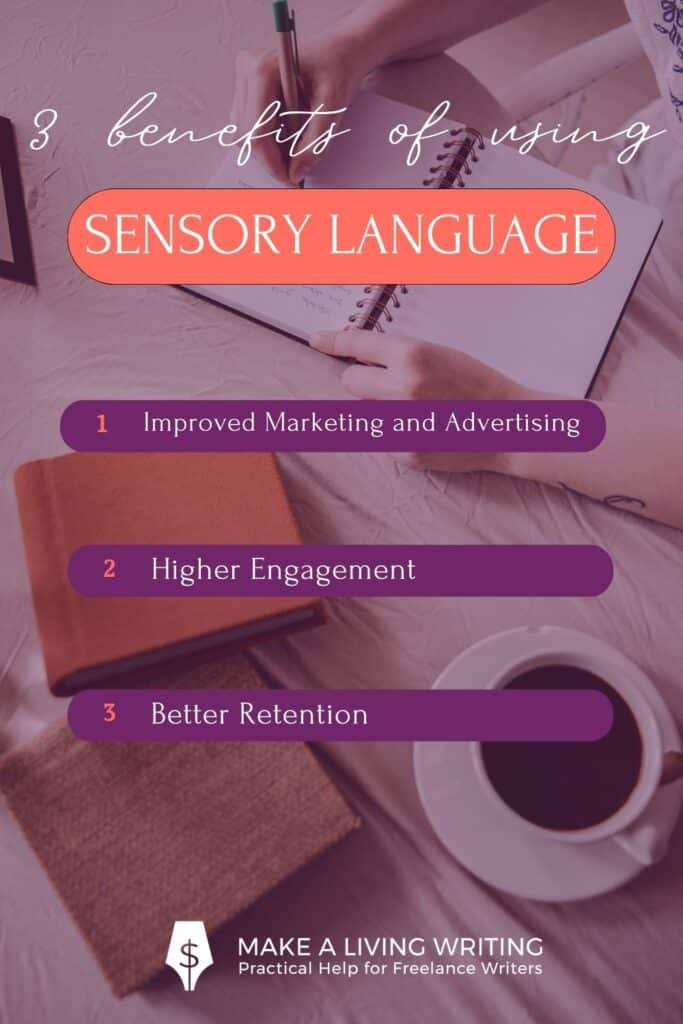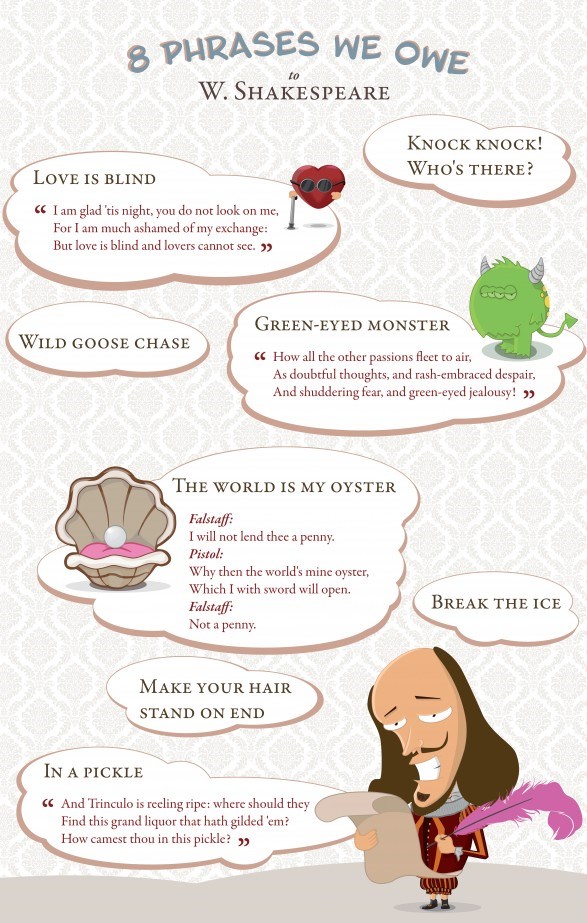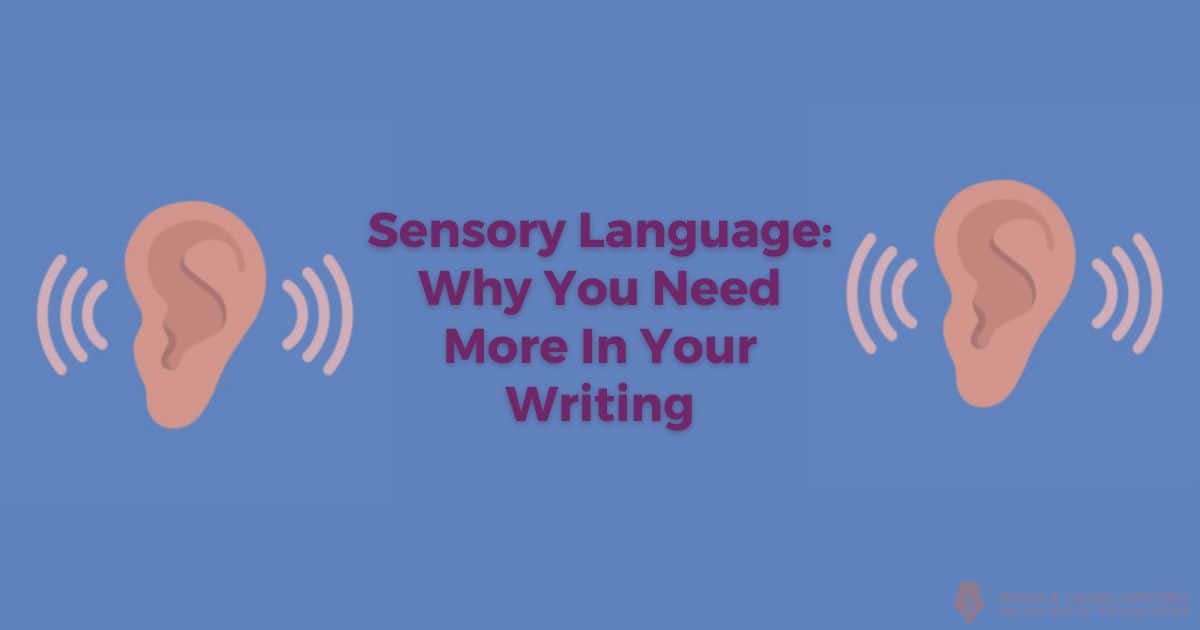According to scientists studying sensory linguistics, using sensory language will help you enhance your writing and immerse your readers in the scene.
Readers will have an easier time visualizing, hearing, and imagining a scenario so that, instead of simply digesting the information, they can actually experience it.
You can use sensory details in any story, literary or not, to make your writing jump off the page and engage the reader’s interest.
In this article, we’re looking at the basics of sensory language and how you can use it to make your writing come alive.
What Is Sensory Language?
Sensory language simply refers to words or phrases that create a connection to one or more of the five senses: sight, sound, smell, taste, and touch.
It’s a descriptive language that plays on the reader’s senses and is tailored to invoke mental images by engaging the reader’s mind on multiple levels.

Sensory Language Examples
Sensory language consists mainly of adjectives (words that give more detail to nouns) and helps to provide readers with a more vivid description of something.
It’s a powerful tool to help readers connect to a specific image, action, or scene.
Listed below are a few examples of sensory language:
1. Visual Words (Sight)
Visual imagery engages the sense of sight. It includes things that you can see, as well as visual descriptions and physical attributes such as size, color, shape, etc.
- Colorful
- Light
- Dark
- Crowded
- Peaceful
- Shiny
- Deserted
2. Auditory Words (Sound)
Auditory imagery is all about the way things sound. Alliteration, onomatopoeia, and other literary devices help to create sounds in writing.
- Loud
- Quiet
- Pounding
- Rambling
- Buzzing
- Bubbling
- Humming
3. Olfactory Words (Smell)
The sense of smell is engaged by olfactory imagery. However, although scent is one of the most powerful triggers of emotion and memory, it can be difficult to write about.
Taste and smell are closely linked, which means that you’ll often find the same words used to describe both, such as “sweet,” or “spicy.“
- Fresh
- Rotten
- Smokey
- Earthy
- Burnt
- Moldy
- Stinky
- Vile
4. Tactile Words (Touch)
Tactile imagery relates to the sense of touch. It includes things that you can feel, such as textures, differences in temperature, or human sensations when touching something.
- Soft
- Smooth
- Rough
- Hard
- Slippery
- Cold
- Hot
- Prickly
- Slimy
5. Gustatory Words (Taste)
These are words that engage the sense of taste. They include things you can taste, and the five basic flavors: sweet, salty, sour, bitter, and umami.
Gustatory words also involve the textures and sensations that are tied to eating.
- Sweet
- Spicy
- Sour
- Salty
- Bitter
- Nutty
- Bland
- Tangy
6. Kinesthetic Words (Kinesthesia)
Kinesthesia relates to the feeling of movement. Some of the words can be similar to tactile words, but kinesthetic imagery is more concerned with full-body sensations, such as you might experience during exercise.
- Flapping wings
- Pounding hearts
- Rushing water
- Gurgling stream
- Flickering/twinkling lights
- Galloping horses
- Fear creeping up
- Batting her eyelashes
Here is an example of some of these words integrated into full sentences:
“Standing on the deserted beach, he could see the flickering lights in the distance. The water sparkled in the moonlight and the sand felt soft and smooth beneath his feet.”
Can you see how much easier it is to imagine the setting thanks to all the sensory words used in the paragraph? It might not be perfect, but perfect is the enemy of good. You might not win the Pulitzer Prize, but using sensory language will make your writing better than most, if not all, of your competitors.
3 Benefits of Using Sensory Language
Sensory language is mostly used in literature, but it doesn’t mean that the application of this type of vocabulary is exclusively artistic. It can also be extremely useful in copywriting, as well as marketing in general.
Here are some benefits that come with using more sensory language in your writing.
Improved Marketing and Advertising
Scientists have shown that multisensory language results in better marketing. That’s because we perceive the world around us using multiple senses, and that’s the reason why most people are naturally more receptive to the type of marketing that reflects multisensory experiences.
Higher Engagement
The use of sensory language helps you create more engagement in your readers. Take the example of the man on the beach. The inclusion of sensory words makes that short passage a lot more descriptive and engaging than simply saying, “He stood on the beach.”
Better Retention
As human beings, we are wired to relate to stuff that has an emotional impact on us. That’s one of the reasons why we tend to remember good stories. Your use of sensory language will make your writing more memorable, and ultimately more impactful.

Using sensory words like the ones listed above is a great way to add narrative elements to your writing.
It helps you qualify and illustrate some concepts and makes your writing more entertaining and engaging.
However, an even more effective way to use sensory language is by including metaphors in your writing. This not only makes your writing stronger but also helps you to avoid boring and generic phrases that lull people to sleep rather than propelling them into action.
Our day-to-day experiences are multisensory. However, it’s difficult to capture this phenomenon linguistically. And that’s where conceptual metaphors come in.
A conceptual metaphor refers to a figurative comparison (metaphor) in which an idea (conceptual domain) is understood in terms of another.
For example:
- Her voice is music to my ears
- The world is my playground
- The present was the cherry on top

Conceptual metaphors are a big part of the conceptual precepts and common language shared by the members of any culture.
Such metaphors are systematic since there’s a defined correlation between the structures of both the source and target domains.
They work well in terms of sensory language because humans generally recognize things in terms of common understanding, and these types of metaphors bridge the gap when the English language can’t produce an adequate description.
And since conceptual metaphors are derived from collective cultural understanding, they have become linguistic conventions.
Scientists mapping the brain’s metaphor circuitry have shown how metaphorical thoughts and language work in the brain. Their theory is that everyday reason uses embodied metaphor circuitry which has a great impact on the sensory regions of the brain.
That’s one of the reasons why these days the definitions for many words and idiomatic expressions depend on the individual’s understanding of accepted conceptual metaphors.
Types of Metaphors that Can be Constructed Using Sensory Language
Using metaphors rife with sensory language is a great way to offer vivid descriptions without forcing sensory language, particularly when writing about subject matters that are too dry to pull narratives from.
In such a case, metaphors can help you simultaneously engage and inform your readers.
For instance, when writing a review post for a course creation platform, you might call it the “Cadillac of online course platforms.” Readers will immediately connect (provided they understand that a Cadillac is a high-quality vehicle) and understand that you mean the online course platform is the best in its category.
If you’re learning how to start a blog, one thing to remember is that it’s not just about the quantity of content you create but also the quality. And sensory language turns weak, generic copy into the tantalizing content your readers thirst for.
Conclusion
Sensory language helps you bring your readers into the world you’re creating. For instance, if you’re a blogger, it can help you increase the time your users spend on your site and make your content more shareable on social media, which can lead to earning more money. A little sensory language can make your content leap from the pages and stick like glue inside your reader’s head.
See what I did there?
Yeah, that’s the power of sensory language and conceptual metaphors. It gives your reader’s imagination a boost and creates more memorable content.
When you incorporate sensory details in your writing, your readers can more easily experience what you are trying to describe.
It reminds them of their own experiences, which gives your writing a powerful universal feel that allows you to personally connect with your readers.
When developing your new strategy and marketing plan, think about incorporating sensory language and help your audience connect with your brand more deeply.

Ron Stefanski is a professor and entrepreneur who has a passion for helping people create and market their own online business. You can learn more by visiting OneHourProfessor.com.


